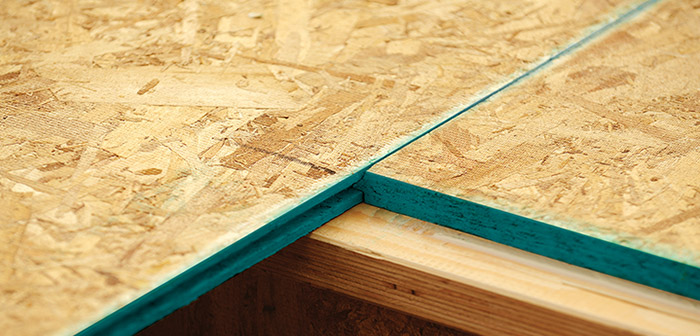
 Both OSB and plywood are made by gluing and pressing wood together, although the process of doing so differs considerably. The manufacturing process of OSB involves cutting rectangular-shaped wood strands from logs and laying them in cross-oriented layers using extremely high pressure and heat to cure the resins to make a solid-panel product with a very consistent quality.
Both OSB and plywood are made by gluing and pressing wood together, although the process of doing so differs considerably. The manufacturing process of OSB involves cutting rectangular-shaped wood strands from logs and laying them in cross-oriented layers using extremely high pressure and heat to cure the resins to make a solid-panel product with a very consistent quality.
OSB has no core voids or gaps that can result in the “soft spots” that sometimes happen in plywood.
This type of engineering and production process means that OSB can be made into larger panels than plywood.
OSB is manufactured from smaller diameter trees which gives it a slight sustainability edge over plywood.
Plywood is made from thin sheets of veneer which are peeled from large logs using a lathe. The veneers are then cross-laminated and glued together using a hot press. Each layer is perpendicular to the underlying one. This means that plywood panels are lighter than OSB and may swell less when exposed to moisture, especially at the edges.
OSB and plywood products share many of the same strength and performance characteristics. OSB is the market leader in sheathing and subflooring material. Estimates put its market share as high as 75%.

